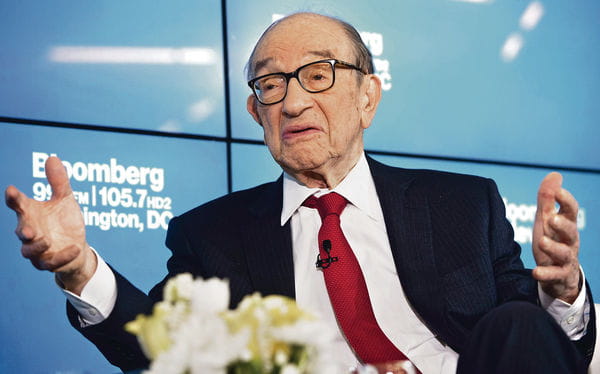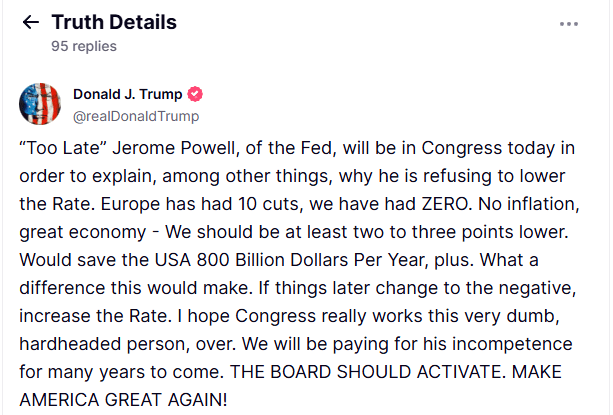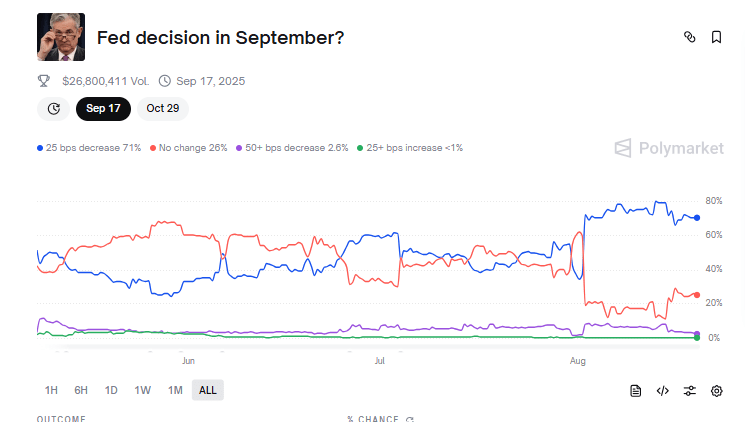Why has Jackson Hole, a small rural town in Wyoming, USA, attracted the attention of global financial capital? Why has the annual Jackson Hole conference become a bellwether for observing the direction of global macroeconomic policies and predicting future market trends?

Jackson Hole: From Farm to Financial Mecca
Every August, central bank governors, finance ministers, and economists from major Western countries gather here for the "Global Central Bank Annual Meeting," hosted by the Kansas City Reserve Bank. (Note: The Governor of the People's Bank of China or other high-ranking officials usually do not attend this meeting.)
The Jackson Hole Conference (hereinafter referred to as the Conference) began in 1978 as a platform for agricultural experts and officials from the Federal Reserve of Kansas City to discuss agricultural products and agricultural trade finance. However, in 1982, the invitation of then-Federal Reserve Chairman Paul Volcker to the Conference completely changed the nature of the Conference.
At the time, Volcker was using the Fund's interest rate hike policy to combat high inflation. His arrival shifted the focus of the meeting to the field of macroeconomic policy. Since then, the meeting has become a "podium" for the Federal Reserve Chairman to issue important policy signals. In addition to Volcker, there have been two other famous speeches at the meeting that are worthy of being recorded in history.
Greenspan's "Irrational Exuberance" speech in 1996
In a speech that year, Greenspan first introduced the concept of "irrational exuberance," warning of the risk of a bubble in the US stock market. Although the market did not immediately collapse, this statement was seen as a sign that the central bank had begun to pay attention to asset price bubbles, and had a profound impact on subsequent policy making and market regulation.

Greenspan Powell's "concise and hawkish" speech in 2022
That year, Powell delivered a short 8-minute speech in which he stated in a hawkish tone that the Fed would not hesitate to continue raising interest rates to curb inflation, even if doing so would bring "some pain" to American families and businesses. This hawkish statement immediately shattered the market's illusions about the Fed's policy shift, causing the US stock market to plummet and bond yields to soar.
These historical records show that the real influence of the meeting does not come from the meeting itself, but from the clear policy signals conveyed by global central bank governors at the meeting.
2025 Conference Preview: Focus on the Hawk vs. Dove Debate on Interest Rates
The theme of the conference, "Transformation of the Labor Market: Demographics, Productivity and Macroeconomic Policy," is inherently charged, as it lies at the heart of the current global debate over inflation and economic growth.
Powell will deliver a speech at the 25-year meeting at 10:00 PM Beijing time on the 22nd. This speech will undoubtedly be a key focus of the meeting. Over the past year, the US labor market has presented complex and contradictory signals: unemployment is low, but job vacancies are declining; wage growth has slowed, but remains above the Fed's defined comfort zone. Meanwhile, core inflation data has been volatile. Furthermore, it is worth noting that this time the US government has exerted clear, direct, and significant political pressure on the Federal Reserve to cut interest rates as quickly and as much as possible. Despite the Fed's renowned independence, its ability to withstand such intense pressure remains questionable.

At such a murky moment, the market will be hanging on Powell's every word, looking for clues between the lines to judge his attitude.
If Powell sends a hawkish signal, indicating that interest rates may remain high for a longer period of time, the dollar will strengthen, U.S. Treasury yields will rise, and the stock market, especially growth stocks such as technology stocks, will face downward pressure. On the contrary, if his stance is more dovish, it may trigger a stock market rebound, weaken the dollar, and boost safe-haven assets such as gold.
Global Central Bank Coordination: Wishful Thinking or Partial Reality
The meeting brought together the governors of major Western central banks, naturally sparking expectations for coordinated action. So, is it possible for global central banks to achieve coordination? Is this merely an idealistic concept, or is it achievable to some extent?
Historically, formal, unified policy coordination is nearly impossible. Central banks primarily serve their own national economic objectives, which often diverge. For example, the Bank of Japan continues to maintain ultra-loose policies to stimulate the economy, while the Federal Reserve, the European Central Bank, and others are aggressively raising interest rates to combat inflation. This policy divergence is driven by different economic cycles, inflation levels, and political environments across countries.
However, the value of the meeting lies in the informal platform it provides for communication and understanding. Central bank governors can use this opportunity to discuss their respective macroeconomic conditions and policy considerations, thereby enhancing mutual understanding and mitigating unexpected shocks caused by misjudging each other's policy intentions. This "implicit coordination"—the avoidance of significant policy deviations and conflicts through transparent communication—is the true significance of the meeting.
Impact on the crypto market: Not the meeting itself, but the monetary policy signal
The signals sent by the conference are crucial for the cryptocurrency market.
Cryptocurrencies, represented by BTC, are generally considered to be risky assets, and their short-term price fluctuations are closely related to monetary policy.
When hawkish policies (interest rate hikes, balance sheet reduction) are adopted, market liquidity tightens, risk appetite declines, and funds tend to flow into risk-free assets such as government bonds, which usually leads to a drop in the price of cryptocurrencies.
When dovish policies (interest rate cuts, balance sheet expansion) are adopted, market liquidity expands, risk appetite rises, and funds will be more willing to flow into risky assets, pushing up asset prices including stocks and cryptocurrencies.
So, although the meeting itself does not discuss cryptocurrencies, it serves as a key node for transmitting signals, and any statement made by Powell on his views on the labor market and inflation will immediately become a guide for traders to imagine future liquidity.

Conference preview and summary: One move affects the entire body
The charm and influence of the conference lies in the fact that it liberates the discussion of macroeconomic policies from obscure reports and boring numbers and condenses it into a highly anticipated speech.
This speech, a look back at history and a look into the future, will not only impact the trends of traditional assets like stocks, bonds, and gold, but will also profoundly influence the fate of the emerging cryptocurrency market.
As the nerves of global finance are tense in the small town of Jackson Hole, waiting for the hawk-dove debate in the speech of Federal Reserve Chairman Powell, a new market game has begun.

